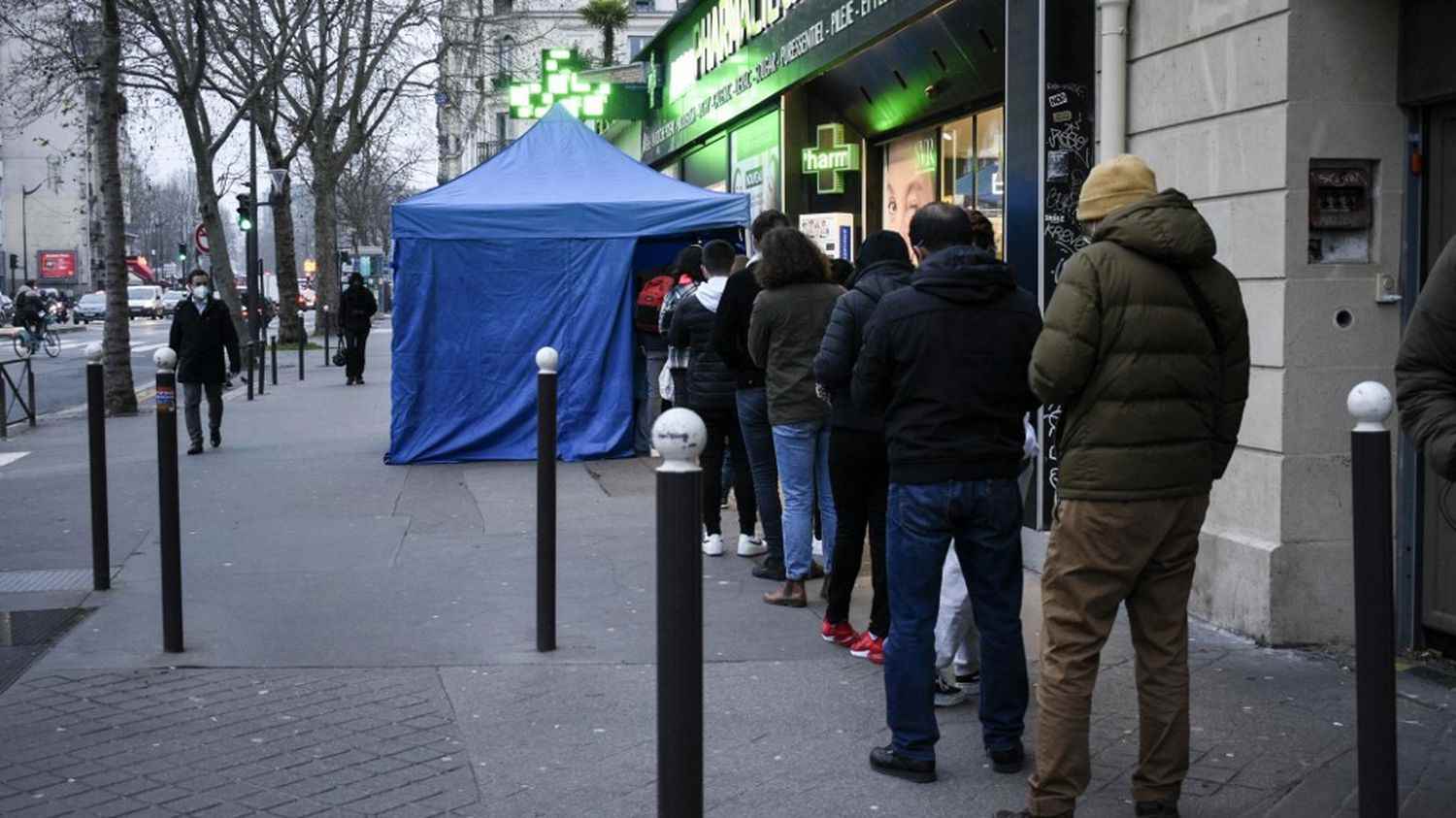After the slope comes the flat area. The almost continuous fall in the number of cases of Covid-19, which began in France since April 1, is turning into a plateau. The dynamic has even reversed. Public Health France identified 25 172 positive cases saturday June 4, up 6.7% over seven days. The test positivity rate also showed a slight rebound (+3.3%), while hospital admissions and the mortality rate continued to decline. “It seems that we are leaving on a new wave”summarized Friday June 3 on franceinfo Professor Antoine Flahault, epidemiologist at the University of Geneva.
>> Covid-19 figures: deaths, hospitalizations, vaccines… Follow the evolution of the epidemic in France and around the world
“It is probably a little early to tell” on the height of this rebound, tempers his colleague Dominique Costagliola. But the director of research at Inserm “does note an increase in the number of cases diagnosed in recent days, which is not only explained by the postponement of diagnoses due to the Ascension weekend. And since we test little, there are probably many more cases than what is detected.”
So how can this upward trend be explained? The end of health restrictions can be a first response, according to Yves Buisson, epidemiologist and president of the Covid-19 cell of the National Academy of Medicine. “Barrier measures, such as [l’obligation du] wearing a mask, may have been lifted a little early”, he judges. Beyond the measurement itself, “one has the impression that the risks are behind us and that we no longer fear much, which can promote relaxation.”
The risk of a new wave is taken all the more seriously as the worrying variants BA.4 and BA.5 are progressing on the territory. To date, these two sub-variants of Omicron still represent a minority share of infections in France, but are increasing rapidly. In its epidemiological update of June 2, Public Health France notes that BA.4 and BA.5 represented respectively 0.5% and 1.5% of the contaminations sequenced between May 9 and May 15. Then 0.8% and 5% the following week. The L452R mutation, common to these two variants, was then detected in 12% of the sequenced cases
This increase can be explained by the transmissibility “more important” of these sub-variants, according to Yves Buisson. They are also already responsible for the latest waves recorded in other countries, such as South Africa and Portugal, underlines SPF. “The wave that hit Portugal during the month of May visibly reached its peak, remaining below that of the previous waves”reassures Dominique Costagliola.
Specialists are also wondering about the immunity acquired by countries that have suffered a wave of BA.2, including France, in the face of the emergence of BA.4 and BA.5 which are genetically close. “Is the BA.5 wave in Portugal so big because they didn’t have a BA.2 wave, unlike most European countries? And, as a result, is France, who had a BA.2 wave, will be better protected against the arrival of BA.4, BA.5?” wonders in The world Arnaud Fontanet, epidemiologist at the Institut Pasteur and member of the scientific council. For Dominique Costagliola, the advantage is likely to be minimal: “It seems that Omicron and its subvariants create quite weak immune defenses.”
There remains the question of the impact of this increase in positive cases on the number of hospitalizations. In its report on emerging variants dated May 18, Public Health France noted that “if the number of hospitalizations [était] increasing” in South Africa after the emergence of these sub-variants, “he [restait] at levels lower than previous waves”. But Dominique Costagliola points out that“in Portugal, the share of hospitalized positive cases was higher.”
The specialists interviewed continue to insist on the interest of vaccination to limit the severity of the new wave that is emerging. To limit the risks of a serious form of the disease, it is not too late to receive a first dose. And even if it is no longer compulsory, wearing a mask in closed places is still recommended by scientists to avoid a new infection.
